Igreja e Convento da Graça is an amazingly under the radar place that is seemingly missed from lots of visitors to do lists. You’ll find it in Lisbon’s Graça neighbourhood, and it is a remarkable church and convent, and from its rooftop you get views of nearly the whole of Lisbon! Inside, you’ll find beautiful azulejo tiles, religious architecture and even some local artwork! Find out what to see and do at Igreja e Convento da Graça with this guide!
The Church and Convent of Graça – A Brief History
The convent dates to 1271, the era of D. Afonso II and the origins of Portugal. The convent was founded shortly after the reconquest of Lisbon. In 1291, the convent would become the headquarters of the Portuguese Province of the Order of Saint Augustine, which would last all the way up until 1834.
The convent was originally built in Gothic style, the church was dedicated to Saint Augustine and served as an important religious center during the medieval period. In the 16th century, the church and convent underwent significant renovations that introduced Renaissance elements to its design. These enhancements reflected the artistic and cultural developments of the time, adding intricate details to the structure.
However, the devastating earthquake of 1755, which destroyed much of Lisbon, severely damaged Igreja e Convento da Graça. The subsequent reconstruction in the late 18th century embraced Baroque and Neoclassical styles, which are evident in the church’s current façade and interior.
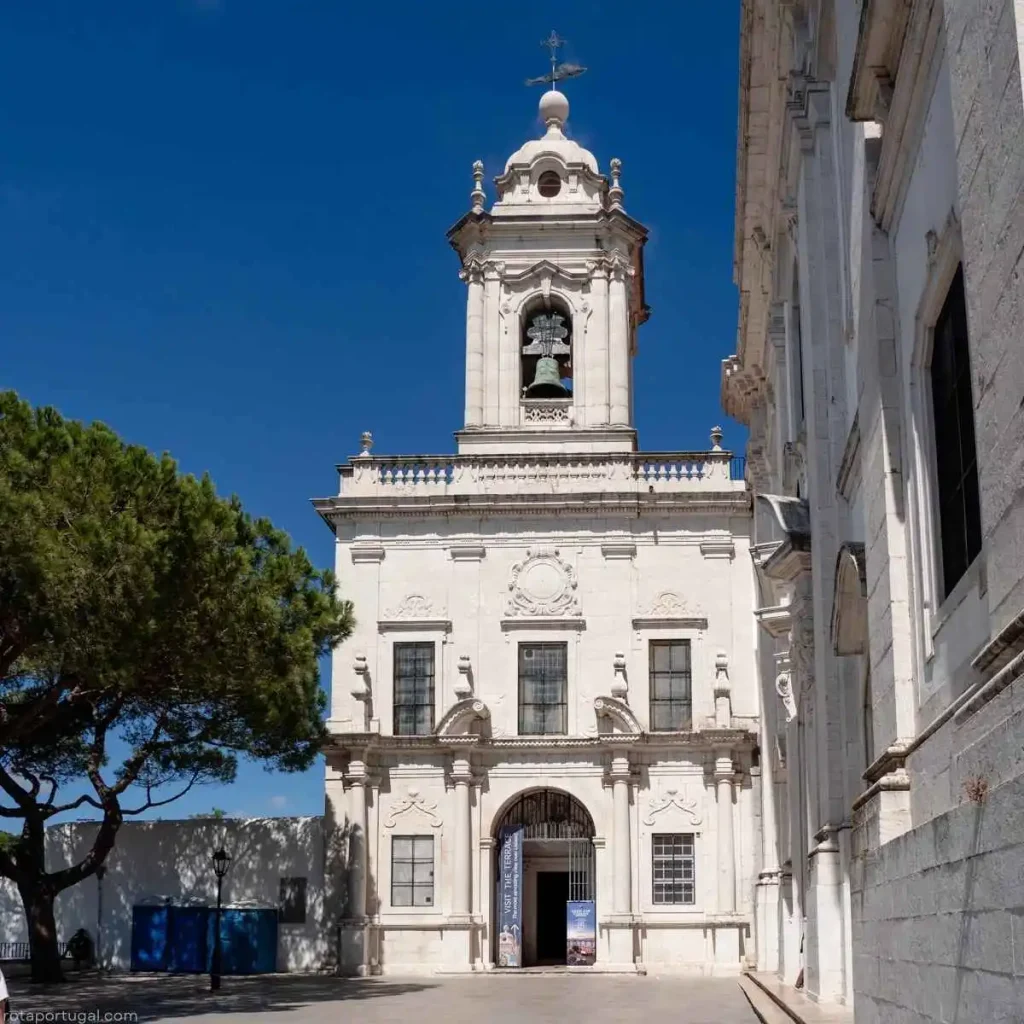
Visiting Igreja e Convento da Graça
Today, much of the convent is open to visitors, and it can be roughly split into two sections. A free ground floor area, and a paid upper floor and rooftop area. The ground floor consists of the Gatehouse, Chapter Room, Cloister, Church and Sacristy.
The Gatehouse
The Gatehouse is the main entrance for visitors to the convent. Originally this grand gatehouse is where the superior and friars would receive noble visitors, donations, and supplies. The main entrance to the Convent gives direct access to the Gatehouse. In the restored gatehouse you’ll find a carved marble floor and on the back wall the painting Saint Augustine Trampling Heresy (1770), by Vieira Lusitano, the original of which is in the National Museum of Ancient Art.
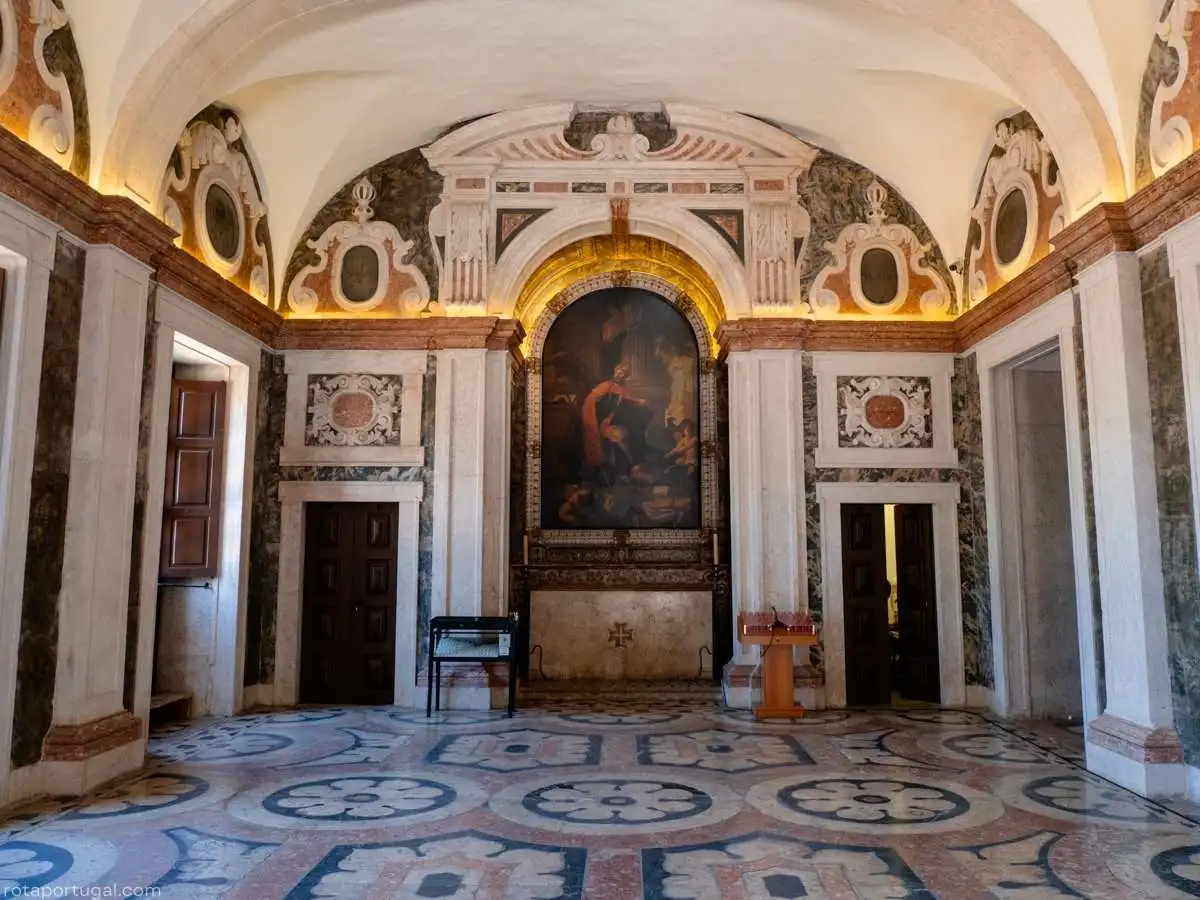
Chapter Room
The gatehouse leads directly to the chapter room. It’s a large rectangular hall, decorated with beautiful Azulejo tile panels. Each one telling the story and history of a martyr. It’s a great place to see azulejos in their original setting, telling their original stories. These were installed in the chapter room sometime in the mid-18th century. The chapter house leads directly to the cloister.
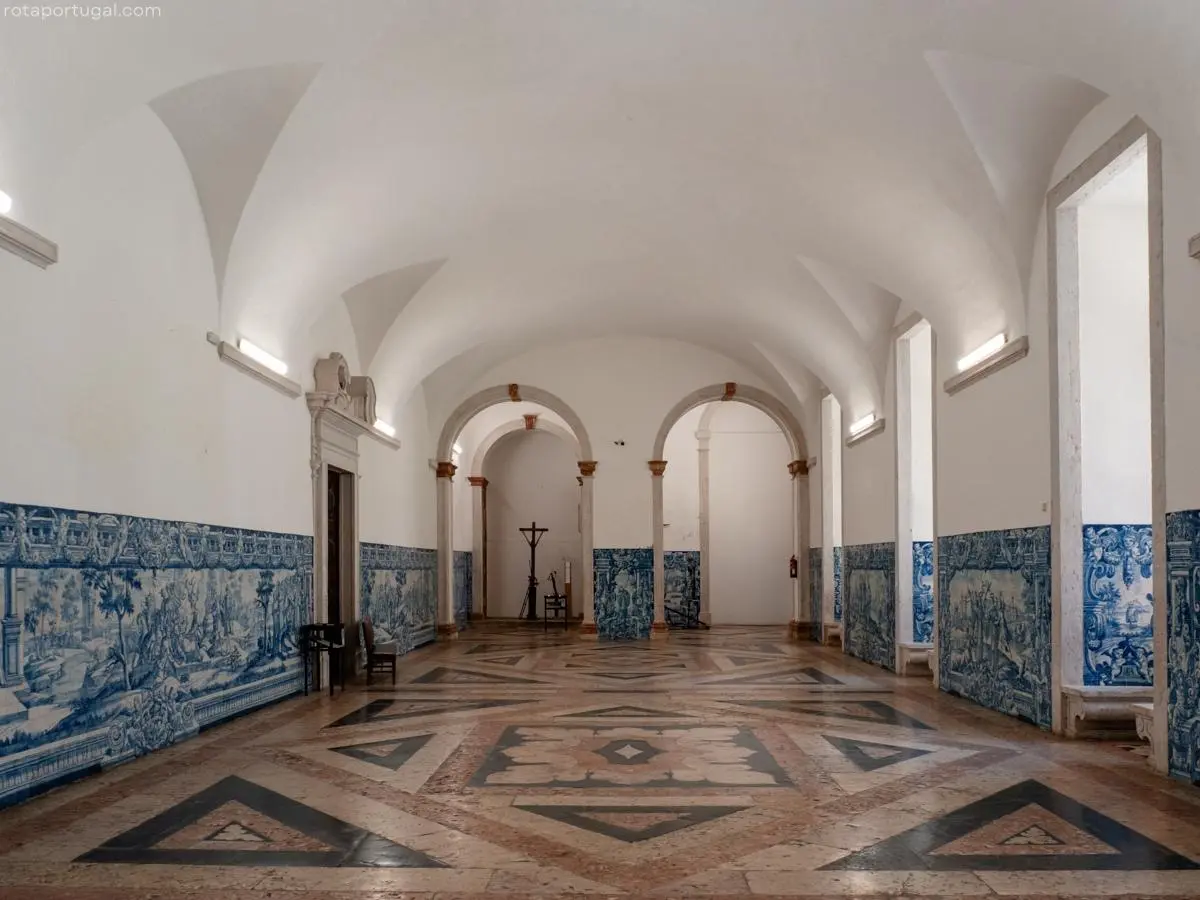
Cloister
The main cloister which is also called the grand cloister is a two-floor cloister built in Serlian style. Originally, the most important rooms of the convent were located around the grand cloister, giving easy access and light. On the second floor, and with windows facing inwards would have been the small rooms of the Friars.
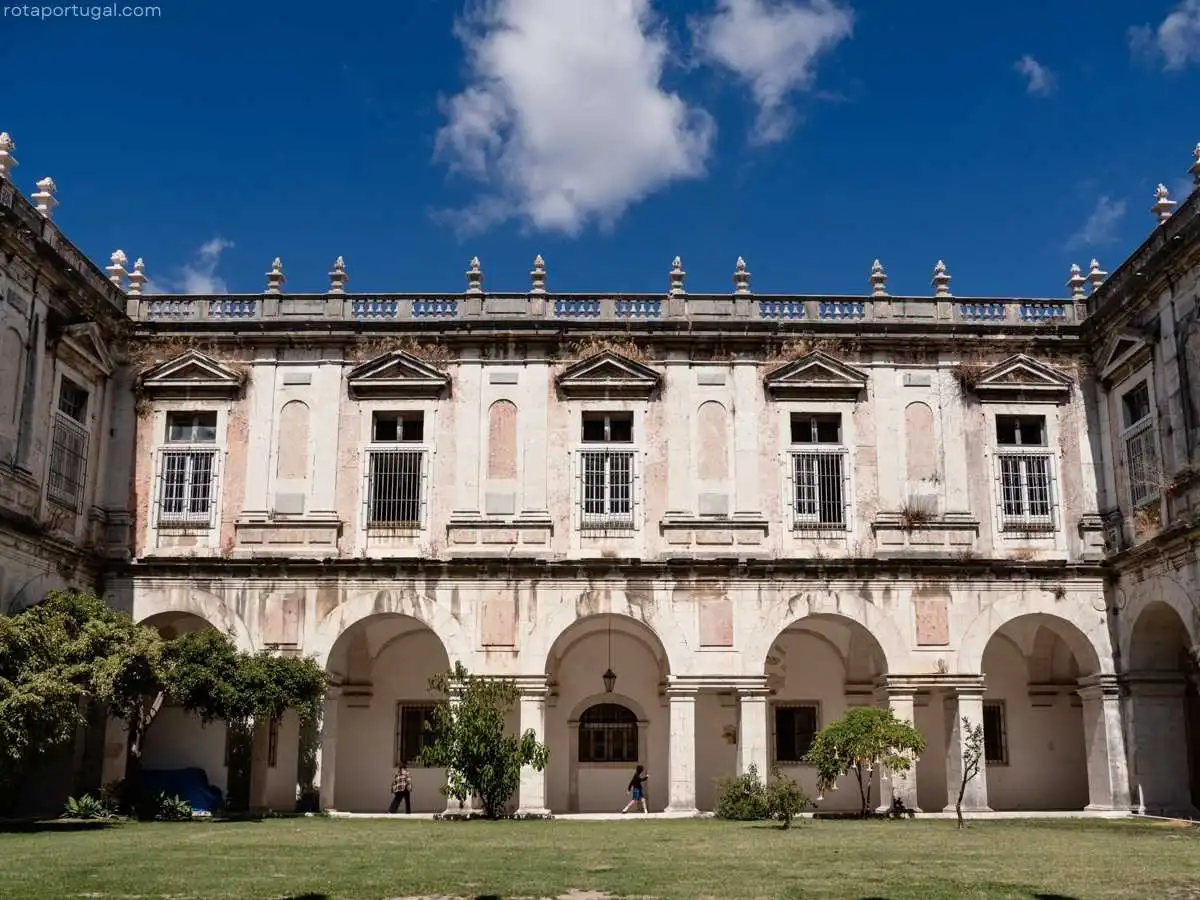
Sacristy of the Church of Our Lady of Grace
Also on the ground floor and accessed through the cloister is the sacristy of the Church of Our Lady of Grace. It is characterized by its Baroque features, decorations, and covered with tile panels.
The Second Floor of Igreja e Convento da Graça
Moving upstairs from the ground floor – you will need to pay for an entrance ticket. It is €5 for an adult, €3 for 6 to 12 year olds, and free for children under 6. This ticket allows entry to a small section of the upper cloister, the noble hall, royal balcony, and the rooftop terrace. It also comes with a free drink that you can collect on the rooftop terrace!
Upper Cloister
The start of the visit is along one wing of the cloister. You’ll take the original path which would have lead important visitors and guests of the convents to the balconies to attend mass.
Noble Hall
On the upper floor, is a hallway lined with recent religious artwork. That provides a nice contrast to the historic artwork and architecture all around you. It’s a corridor that leads to the so called Noble Hall, a space that was used for official receptions. The Noble Hall is covered in 17th century tile panels and gives access to the Royal Balcony in the church.
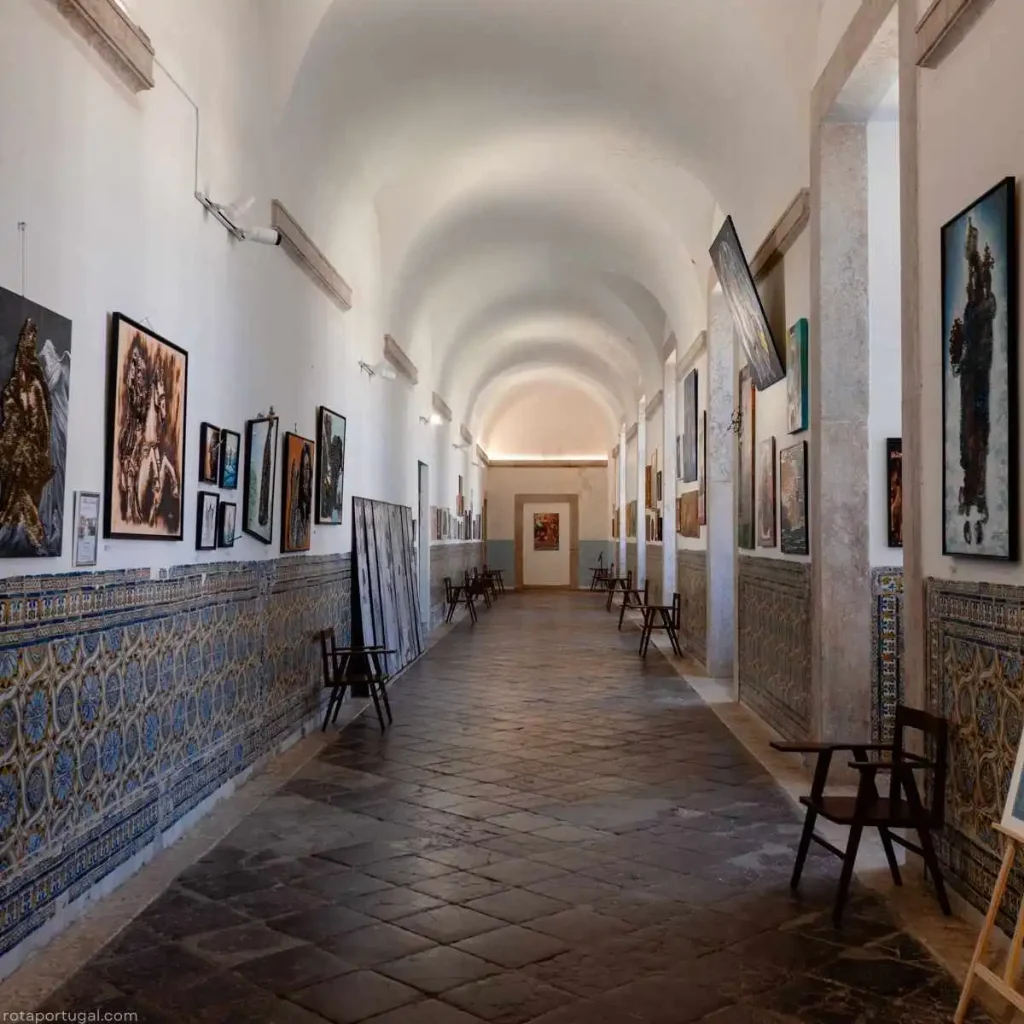
The Rooftop Terrace
The standout feature, and reason most people will want to visit the church and convent is its amazing rooftop terrace. Almost the entire rooftop is accessible, giving you a view downwards into the cloister and across the convent. The focal point is the bell tower and the seating area around it. Which gives you incredible near 180 degree views of Lisbon.
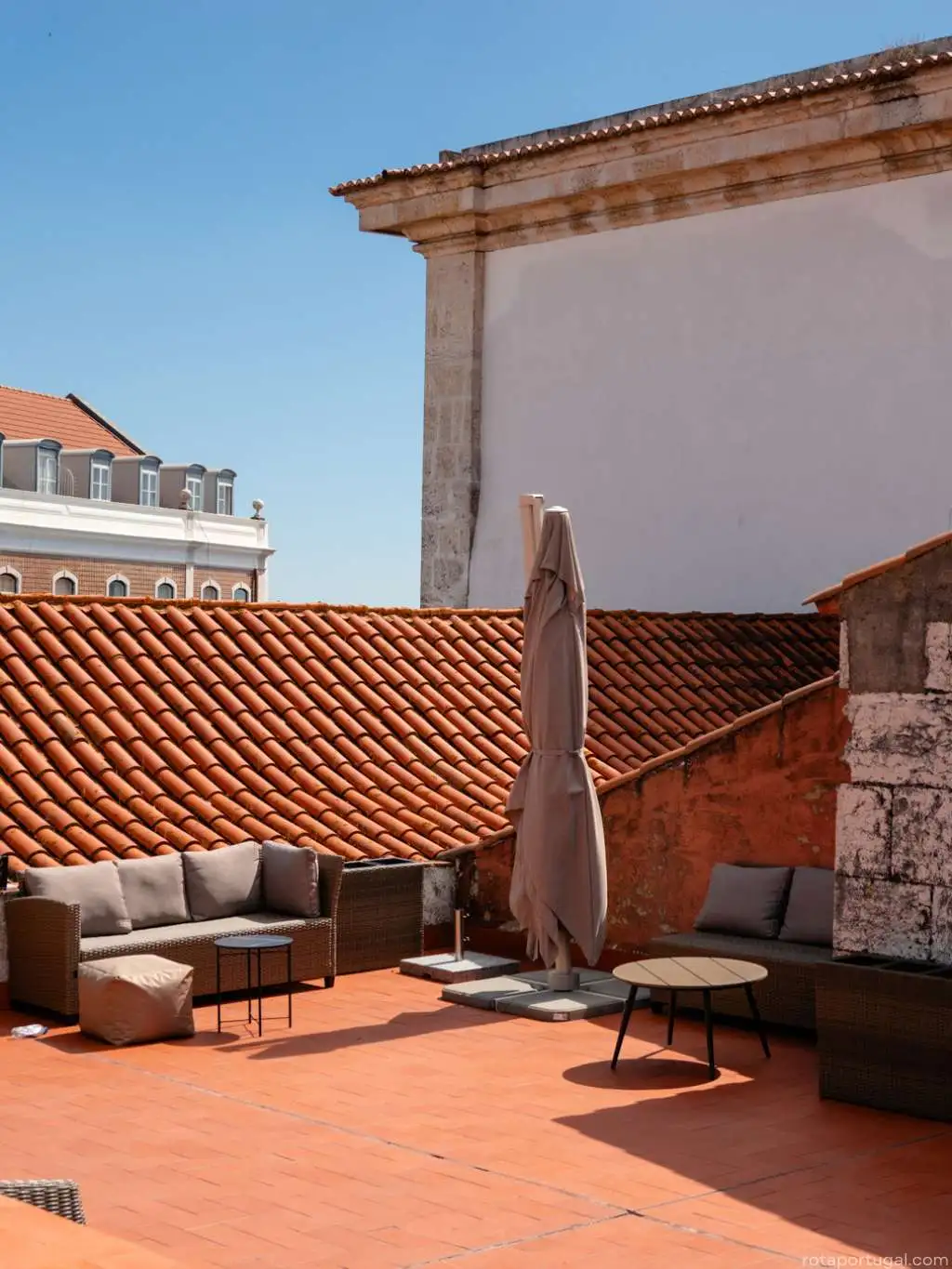
The Free Drink
Included in your visit to the rooftop is a drink, which can be your choice of beer, wine, soft drink or a chilled bottle of water. When I visited the rooftop, it was empty so I was able to sit and drink a chilled glass of Rosé with the rooftop to myself!
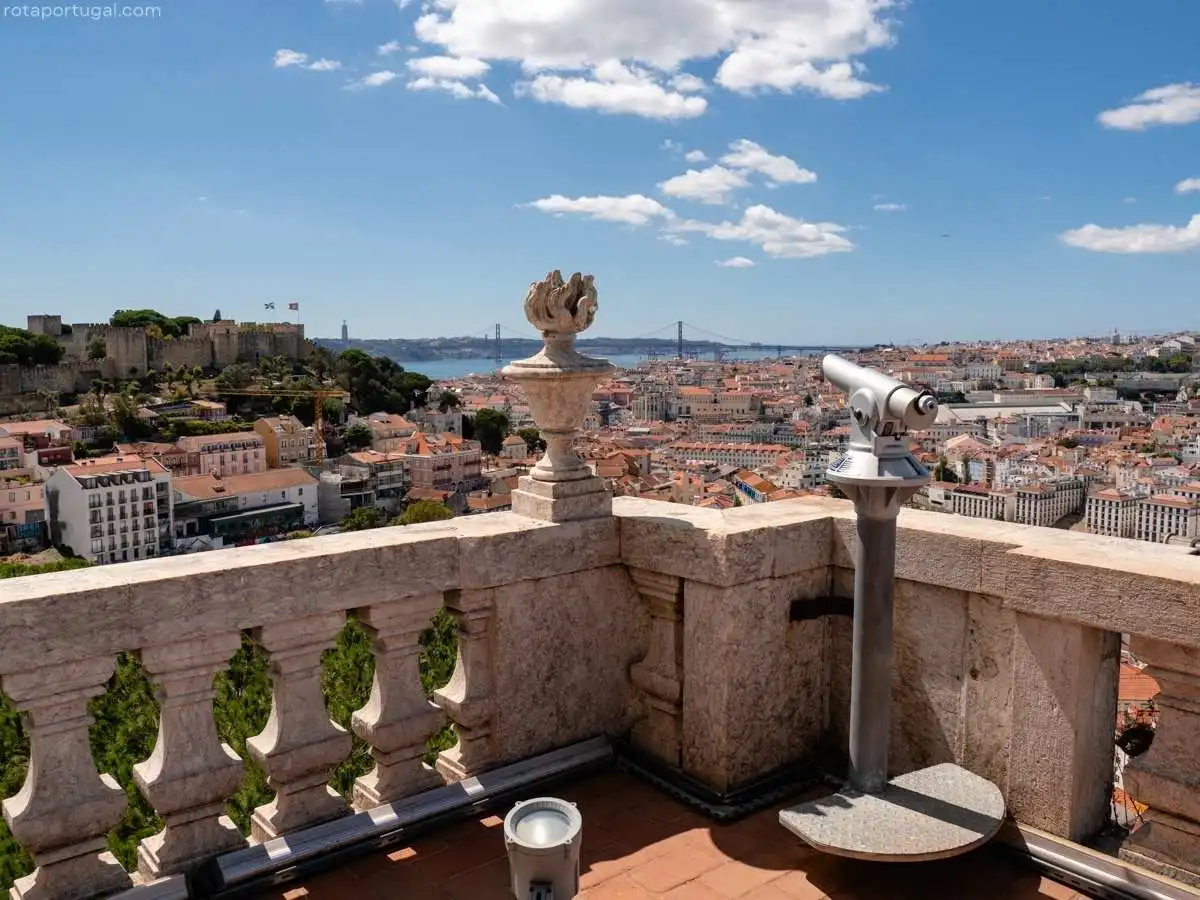
The Church – Igreja da Graça
Once you’ve visited the terrace and headed back downstairs, the final place to visit is the main church. Once again, its free for all visitors, but convent visitors can access it through a side door within the convent.
The church, like the convent was originally built in the 13th century, and was updated in the 16th century, before being destroyed by the 1755 earthquake. After this it was enlarged and rebuilt in Baroque style.
The double façade is made up of the church and the old convent gatehouse, above which rises the bell tower, the work of Manuel da Costa Negreiros, dating from 1738. In the sober interior, the highlights are the gilded carved altars, the tiles from the 16th, 17th and 18th centuries, the ceiling painted by Pedro Alexandrino de Carvalho and the 18th century sculptures in the intermediate chapels.
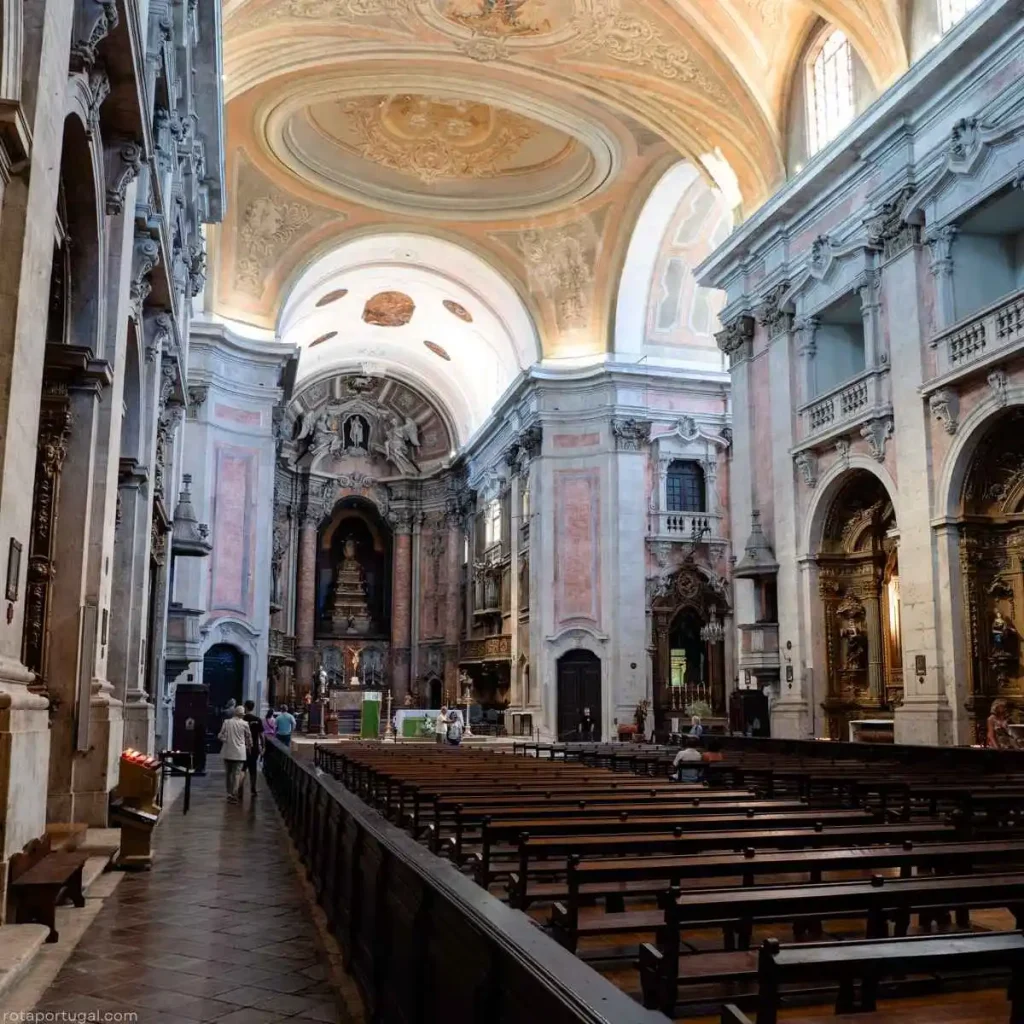
Entry to the Church and Convent of Graça
Entry to the church, convent, cloister, and several azulejo halls is free. However, to access the rooftop, miradouro, Noble Hall, and Royal Balcony you will need to buy a ticket (Adults – €5.00, 7–12-year-olds €3, under 6 is free). Tickets can be bought directly on site.
The Convent is open everyday:
- May to October: 9am – 7pm
- November to April – 9am – 6pm
